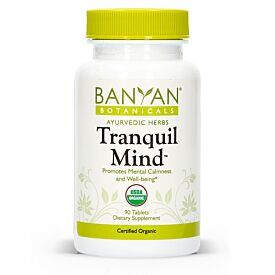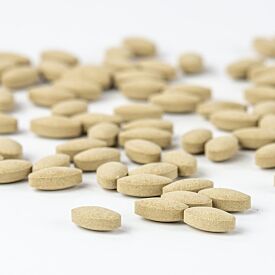Bhastrika Pranayama

Bhastrika Pranayama, also known as Bellows Breath, is a heating breathing practice that mimics fanning a fire with a steady flow of air. Bastrika is a Sanskrit word meaning “bellows,” and it describes the active filling and emptying of the abdomen and lungs during this practice.
Bhastrika pranayama stokes the inner fire of the mind and body, supporting proper digestion on all levels. It is generally balancing for kapha and vata, but should be practiced in moderation (and more gently) if pitta is aggravated.
Benefits
Bhastrika Pranayama
- Balances excess vata, pitta (when practiced gently), and kapha
- Burns ama (toxins)
- Cleanses and rejuvenates the lungs
- Increases lung capacity
- Tones the muscles of the heart, bronchial tree, diaphragm, and abdomen
- Helps to strengthen the heart and lungs
- Infuses the blood with oxygen
- Facilitates the proper removal of carbon dioxide from the blood and tissues
- Kindles agni (the digestive fire), and tones the digestive system as a whole
- Cleanses and invigorates the liver, pancreas, and spleen
- Alleviates allergies and asthma
- Cleanses the nasal passages, sinuses, and chest of excess mucus
- Improves circulation
- Supports proper elimination
- Balances and strengthens the nervous system
- Induces a sense of peace, tranquility, and focus
- Promotes vigor and vitality in the mind and body
Before You Begin
Bhastrika is a more advanced pranayama and therefore requires some familiarity with abdominal breathing. Before practicing bhastrika, you should be proficient with more foundational pranayamas, such as Full Yogic Breath.
These instructions are meant to provide a safe general introduction to this practice. Of course, it is always best to learn a new technique in person, with a qualified teacher.
Contraindications
Bhastrika should not be practiced by pregnant or menstruating women. It is also contraindicated for individuals with high blood pressure, heart disease, hernia, gastric ulcer, epilepsy, vertigo, significant nosebleeds, detached retina, glaucoma, recent abdominal surgery, and anyone at risk for stroke. Those suffering from asthma or chronic bronchitis should practice bhastrika only under the guidance of an experienced teacher.
How to Practice
Bhastrika (as with most pranayamas) is best practiced on an empty stomach. Choose a comfortable sitting position. If you are able, it is best to sit cross-legged on the floor with a cushion or blanket to comfortably elevate the hips. Alternatively, you may choose to sit toward the front of a chair, with your feet flat on the floor.
Rest the hands on the knees, consciously opening the chest. Allow the spine to lengthen so that the back, neck, and head are erect. Gently close the eyes and breathe through the nose (you will be breathing through the nostrils throughout this practice).
Begin by taking a couple of Full Yogic Breaths, grounding the mind and gently awakening the prana maya kosha (the energetic body). When you are ready to start practicing bhastrika, inhale as in full yogic breath and then exhale forcefully, without strain or tension. As you exhale, allow the abdomen to dynamically contract, drawing the navel toward the spine as the diaphragm ascends toward the lungs.
Follow this exhalation immediately with a forceful inhalation—again, without strain or tension. As you inhale, allow the abdomen to actively expand, moving the navel away from the spine as the diaphragm descends toward the pelvic floor.
Once again, exhale forcefully, contracting the abdomen and emptying the entire body of breath. Focus on both the inhale and the exhale; their length and force should remain equal as you practice.
Observe the breath, the flow of prana, and your dynamic movements as you count ten of these dynamic breaths. At the top of the tenth inhalation, retain the breath for a moment before gently releasing the breath with a long, complete exhalation. Then, take one more deep inhalation and exhale slowly. This completes one round of bhastrika pranayama.
During bhastrika, breath movements—the expansion and contraction of the abdomen and chest—are slightly exaggerated. If it feels natural, you can allow the hips and spine to gently rock forward with each inhalation, opening the front body, and then allow the hips to rock backwards as the spine contracts slightly on each exhalation. Be careful to keep the body relaxed in the activity—through every inhale, every exhale, and through each exaggerated movement of the abdomen, chest, and spine.
In the beginning, it is important that the breath remain relatively slow—about one breath every two seconds—and that you rest between rounds of bhastrika. With practice, the abdominal muscles will grow stronger and you can slowly build up to five rounds—each consisting of ten forceful breaths, a brief pause at the top of the tenth inhalation, a long, slow exhale followed by one more deep inhalation and a slow exhalation.
When you are ready to close your practice, complete a round with a long, relaxed breath in and out. Then allow your breath to return to normal. Take a moment to observe how you are feeling. Notice your thoughts and your state of mind. Take note of how you feel physically. Are you warmer than when you started? Where do you feel the effects of this practice?
When you feel ready, gently open your eyes, continuing to direct some of your awareness within as you slowly stand and offer your full attention to the rest of your day.
There are many variations of bhastrika pranayama. Some more advanced techniques incorporate breath retention (kumbhaka), muscular locks (bandhas), breathing through one nostril at a time, and increasing the pace of the breath. These practices are best learned from a qualified teacher.










